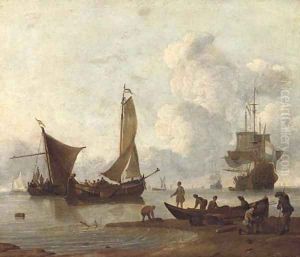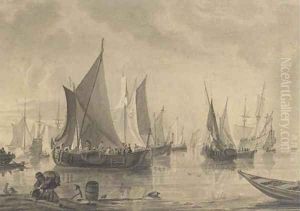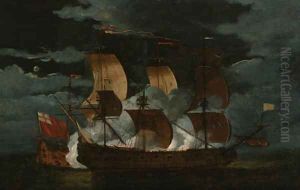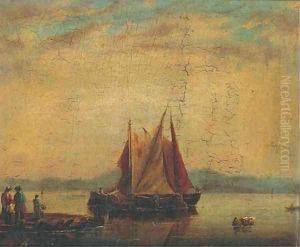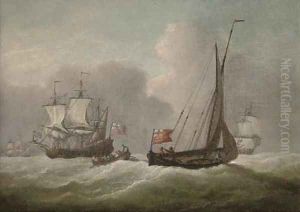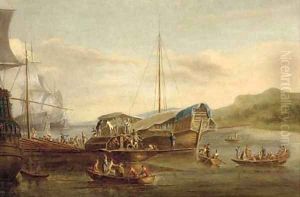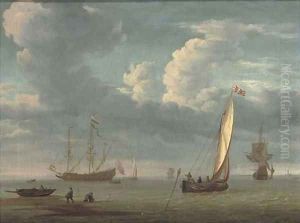Willem Van De Velde Paintings
Willem van de Velde the Younger was a distinguished Dutch painter of marine subjects, born in Leiden in 1611. He was the son of Willem van de Velde the Elder, who was also a well-known maritime artist. The younger Van de Velde is particularly renowned for his detailed and realistic depictions of ships and sea battles, a genre that was highly popular in the 17th century, reflecting the maritime prowess and naval interests of the Dutch Republic during its Golden Age. His works are characterized by their meticulous detail, careful composition, and the effective use of light and shadow to convey the mood of the sea and sky. Van de Velde started his artistic training under the guidance of his father and Simon de Vlieger, a prominent marine painter of the time. In the 1630s, he began to make a name for himself, producing both pen paintings, which are detailed works created using pen and ink on canvas, and oil paintings that captured various marine subjects with remarkable accuracy and beauty. His talent for depicting the sea in all its facets - from calm waters to stormy seas - quickly established him as a leading figure in the genre of marine painting. In 1672, amidst the Franco-Dutch War, Van de Velde moved to England with his father at the invitation of Charles II. There, he was appointed as the official court painter, a role that provided him the opportunity to document naval battles and maritime events of the English fleet. This period of his career was marked by the production of a significant number of works that served not only as artistic creations but also as historical documents, providing invaluable insights into the naval history of the period. His paintings from this era are noted for their historical accuracy and detail, qualities that have made them a key resource for historians. Willem van de Velde the Younger continued to work and live in England until his death in 1693. Throughout his career, he remained a highly respected and influential figure in the world of marine painting, his legacy enduring through the centuries. Today, his works are held in high esteem and can be found in major museums and collections around the world, celebrated for their technical skill, historical value, and artistic beauty. Van de Velde's contribution to the art of marine painting has left an indelible mark on the genre, making him one of the most important maritime artists of his time.
